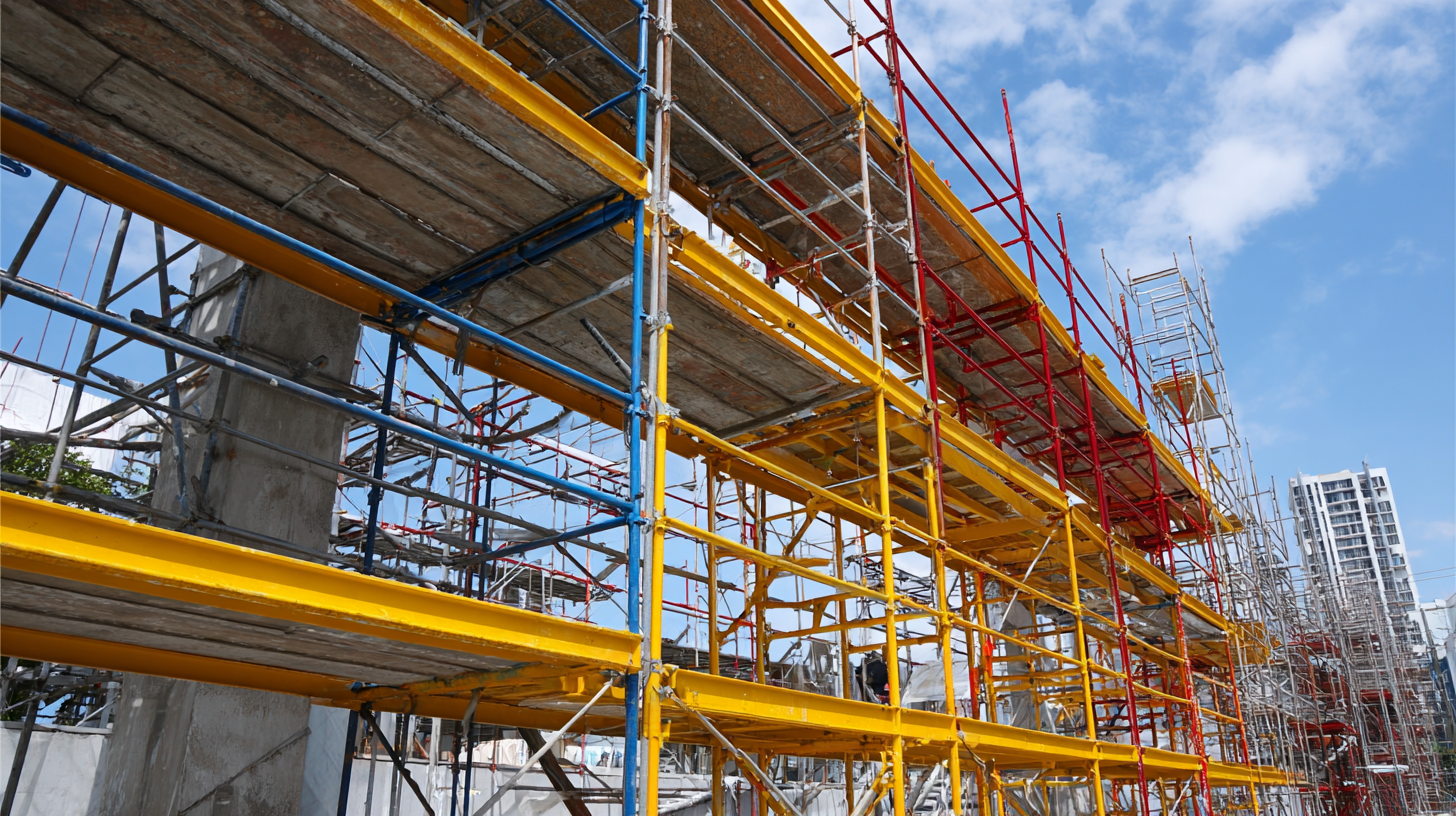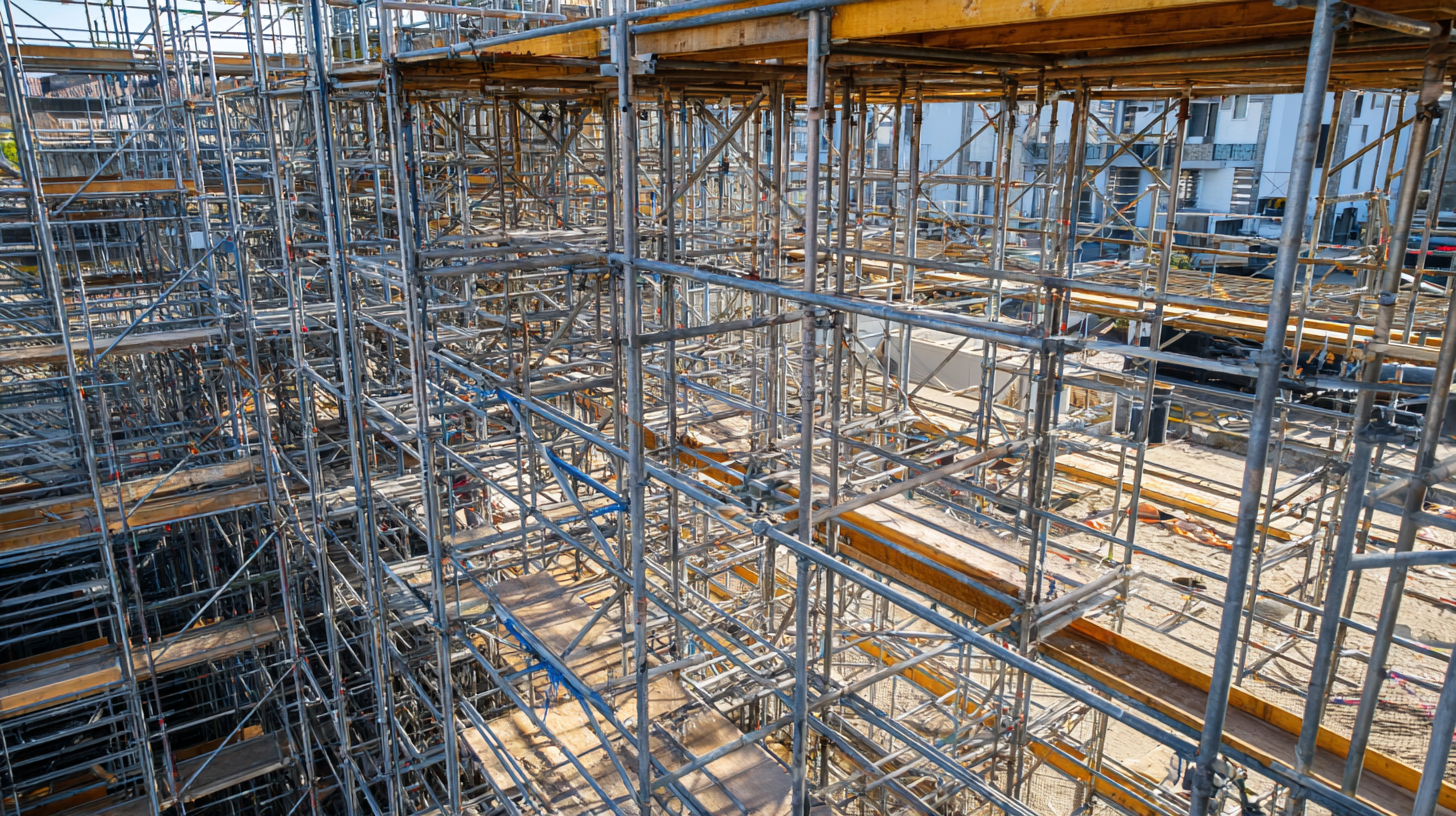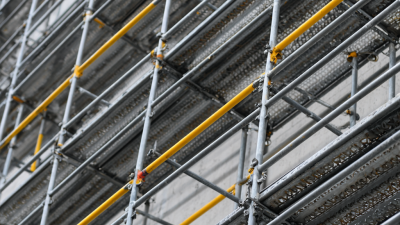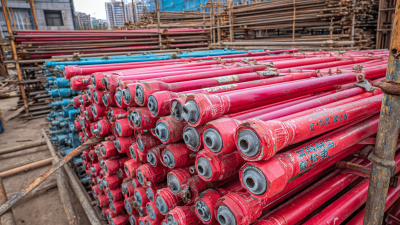 +86 18531741341
+86 18531741341
Leave Your Message
In the realm of construction, the selection of appropriate scaffolding is a critical factor that directly influences both safety and efficiency on job sites. According to a report from the Associated General Contractors of America, approximately 70% of construction-related accidents can be attributed to falls from heights, emphasizing the pivotal role that proper scaffolding plays in safeguarding workers. With regulations evolving and safety standards becoming increasingly stringent, it is imperative for construction managers to stay informed about the latest industry best practices when it comes to construction scaffolding.

As industry expert John Smith, a leading authority in safety compliance, states, "Choosing the right scaffolding is not just about meeting regulations—it's about ensuring the safety and well-being of every worker on the site." This underscores the necessity for thorough knowledge and consideration of the various types of scaffolding available, as well as understanding key safety standards that must be adhered to. By adhering to these guidelines, companies can minimize risks and enhance productivity, setting a foundation for successful project completion. Thus, in exploring how to choose the right construction scaffolding, it is crucial to discuss the key safety standards and best practices that are instrumental in achieving a safe work environment.
When selecting construction scaffolding, understanding the various types available is crucial to ensure safety and efficiency on the job site.
The most common types include frame scaffolding, which offers stability and is easy to assemble, making it suitable for a wide range of projects. However, its modular design can limit flexibility in unique workspaces.
Another option is system scaffolding, which features pre-engineered components that facilitate quick setup and heightened safety.
This ensures a strong structure that can support heavy loads, yet it often comes at a higher cost. Lastly, suspended scaffolding is ideal for work on tall buildings and facades, allowing workers to access elevated areas easily.
However, this type poses unique safety challenges and requires rigorous adherence to standards to prevent accidents.
Each scaffolding type presents distinct advantages and disadvantages, making it essential to evaluate them against specific project requirements before making a decision.
When choosing the right construction scaffolding, it is crucial to prioritize safety standards that ensure regulatory compliance and adhere to industry guidelines. The Occupational Safety and Health Administration (OSHA) has established comprehensive regulations for scaffolding in construction, emphasizing the need for proper design, load capacity, and user training. According to the National Institute for Occupational Safety and Health (NIOSH), about 4,500 workers are injured annually in scaffolding-related incidents, underscoring the importance of adhering to these safety protocols.

Moreover, the American National Standards Institute (ANSI) recommends that all scaffolding systems should comply with the ANSI A10.8 standard, which outlines the minimum design and performance criteria for scaffolding. This includes specifications for scaffolding materials, safety equipment, and inspection processes. Additionally, the Construction Industry Safety Coalition (CISC) highlights that regular inspections, conducted by a qualified individual, are essential to ensuring that scaffolding systems remain safe throughout their use. By focusing on these critical safety standards and best practices, construction firms can significantly reduce risks associated with scaffolding-related accidents.
When evaluating scaffolding materials, three primary factors come into play: durability, weight capacity, and cost efficiency. The durability of scaffolding materials is crucial for ensuring safety and longevity on construction sites. According to a report by the Occupational Safety and Health Administration (OSHA), scaffolding failures are often attributed to inadequate material strength, which can be mitigated by using high-quality materials like aluminum and steel. Aluminum scaffolds, while lightweight, can support loads typically ranging from 750 to 1,500 pounds, depending on the design. Steel scaffolds, on the other hand, offer greater weight capacity, often exceeding 3,000 pounds, making them suitable for heavy-duty projects.
Cost efficiency is another significant aspect to consider when selecting scaffolding materials. A study by the National Association of Scaffold and Access Safety Experts (NASASE) reveals that while aluminum scaffolding tends to have a higher upfront cost, its longer lifespan and lower maintenance requirements can lead to significant savings over time. In contrast, wood scaffolding, although initially cheaper, often necessitates more frequent replacements and inspections, increasing overall project costs. Therefore, a thorough assessment of these factors not only ensures compliance with safety standards but also helps contractors optimize their budgets while maintaining a safe work environment.

When setting up scaffolding, ensuring stability and worker safety is paramount. A crucial aspect of scaffolding setup includes conducting a thorough risk assessment before installation. This involves evaluating the site conditions, such as ground stability and overhead hazards. Personnel should be trained to identify potential risks, ensuring that the scaffolding is built on a solid and level foundation. Proper scaffolding materials must also be selected to suit the specific job requirements, taking into account weight capacities and environmental factors.
Additionally, implementing effective best practices during the setup process can significantly enhance safety. For instance, scaffolds should be erected according to the manufacturer’s guidelines, with all components inspected for integrity. Safety features like guardrails, toeboards, and access ladders should be installed to prevent falls and accidents. Regular inspections throughout the project are essential to detect any issues that may arise, ensuring the scaffolding remains stable and secure as work progresses. By prioritizing these practices, construction teams can create a safer working environment that minimizes risks and protects workers on site.
Training and certification are critical components for scaffolding operators and supervisors to ensure safety on construction sites. Proper training programs should cover a variety of topics, including the types of scaffolding, assembly and disassembly procedures, load capacities, and hazard recognition. This knowledge equips operators with the skills needed to identify potential risks and implement safe work practices. Effective training is not a one-time event; it must be ongoing to keep pace with new regulations and technological advancements in scaffolding.
Certification is also essential, as it serves as a formal acknowledgment of an individual’s competence in scaffolding operations. Different jurisdictions may have varying requirements, but generally, operators must pass examinations that test their understanding of safety standards, structural integrity, and emergency protocols. Supervisors should have advanced certifications that reflect their responsibility for overseeing crew safety and compliance with regulations. By prioritizing training and certification, construction companies can foster a culture of safety, reduce the likelihood of accidents, and enhance overall job site efficiency.
| Safety Standard | Description | Best Practice | Training Requirement |
|---|---|---|---|
| OSHA 1926.451 | Safety standards for scaffolding used in construction. | Regular inspections of scaffolding equipment. | Certification for scaffold users. |
| ANSI/SSFI 10 | Standard for suspended scaffolding. | Use of proper fall protection systems. | Training for operators on suspended scaffold safety. |
| CSA Z797 | Scaffolding standards in Canada. | Ensure capacity limits of scaffolds are never exceeded. | Comprehensive training for scaffold supervisors. |
| ISO 9001 | Standard for quality management systems. | Implement a quality assurance program for scaffolding operations. | Management training on quality standards. |






